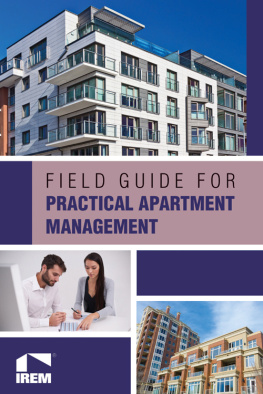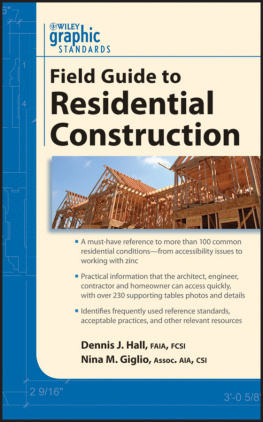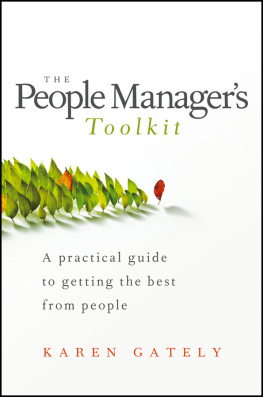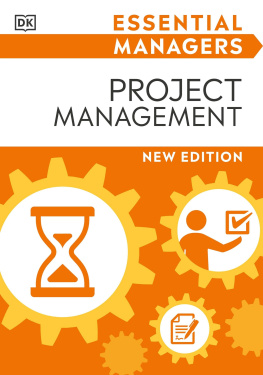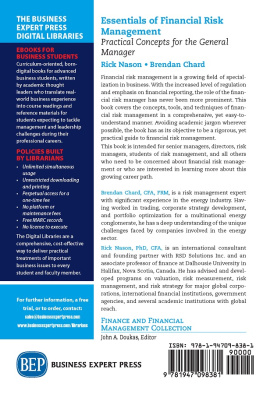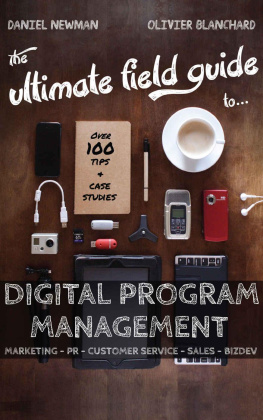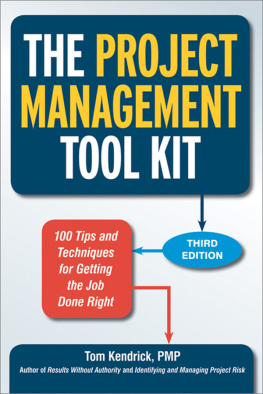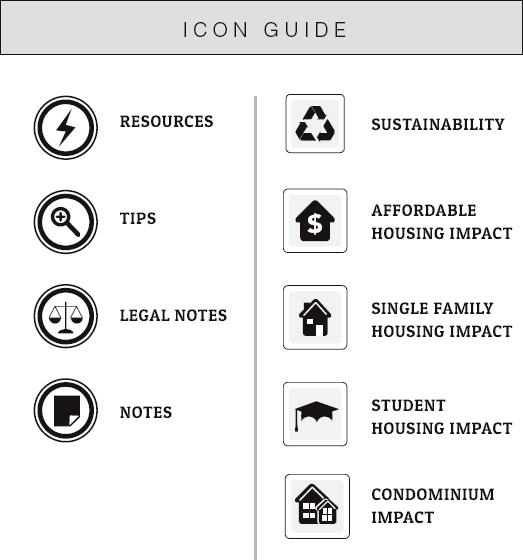FIELD GUIDE FOR
PRACTICAL
APARTMENT
MANAGEMENT

ACKNOWLEDGEMENTS
The Institute of Real Estate Management is thankful for the people listed below for taking time from their personal and professional schedules to serve as Review Team Members on this book. Their dedication and support of IREM education is greatly appreciated!

REVIEW TEAM CHAIR
Michael McCreary , CPM
[Marietta, GA]
REVIEW TEAM MEMBERS
Sheila Austin , CPM
[Franklin, MI]
Kathy Harmon , CPM, ARM
[Minnetonka, MN]
Dr. Debbie Phillips , CPM
[Stockbridge, GA]
Steven Rea , CPM
[Austin, TX]
Robin Stinson , CPM
[Altamonte Springs, FL]
Mollie Wood , CPM
[Indianapolis, IN]
ADDITIONAL REVIEWERS
Audrey Demson , CPM
[Phoenix, AZ]
Carolyn Emery-Brunk , CPM
[Wichita, KS]
Vickie Gaskill , CPM, ARM
[Kent, WA]
Enis Hartz , CPM
[Anaheim, CA]
Larry Johnson , CPM
[South Dennis, MA]
Ed Zehfuss , CPM
[Pittsburgh, PA]
IREM DEVELOPMENT
Rebecca Niday
Content and Curriculum Development
Mindy Wallis
Content and Curriculum Development
IREM programs provide general information on real estate management practices, but the Institute makes no representation that the information offered is applicable in all jurisdictions or that programs contain a complete statement of all information essential to proper real estate management in a given area. The Institute therefore encourages readers to seek competent professional advice with respect to specific problems that may arise, and the Institute, its faculty, agents, and employees assume no responsibility or liability for the consequences of an attendees reliance on IREM program contents or materials in specific situations.
Though some of the information used in case study scenarios and examples may resemble true circumstances, the studies are fictitious. Any similarity to real properties is purely coincidental.
Forms, documents and other exhibits in this book are samples only; the Institute does not necessarily endorse their use. Because of varying state and local laws and company policies, competent advice should be sought in the use of any form, document, or exhibit.
All IREM program contents and materials are the property of the Institute of Real Estate Management, which strictly prohibits reproduction of IREM contents or materials in any form without the prior written consent of the Institute.
2015 Institute of Real Estate Management. All rights reserved. IREM logo, IREM, Certified Property Manager, CPM, the CPM key logo, Accredited Residential Manager, ARM, the ARM torch logo, Accredited Management Organization, AMO, the AMO circle logo, Income/Expense Analysis, Expense Analysis JPM and MPSA are registered marks of the Institute of Real Estate Management.
All rights reserved. The course materials or any part thereof may not be reproduced, stored in a retrieval system, or transmitted, in any form or by any meansgraphic, electronic, or mechanical, including photocopying, recording, or otherwise, without the prior written permission of the Institute. The Institute retains copyright to the original materials and to any translation to other languages and any audio or video reproduction, or other electronic means, including reproductions authorized to accommodate individual requests based on religious or medical deferments from classroom participation.
Copyright 2015 Institute for Real Estate Management. All rights reserved.
Library of Congress Cataloging-in-Publication Data
Field guide for practical apartment management. -- Third edition.
pages cm
Reviewed by Michael McCreary, CPM, Marietta, GA, and others.
ISBN 978-1-57203-224-8 (softcover) -- ISBN 1-57203-224-3 (softcover) -- ISBN 978-1-57203-236-1 (eBook) 1. Real estate management--Handbooks, manuals, etc. 2. Apartment houses--Management--Handbooks, manuals, etc. 3. Rental housing--Management--Handbooks, manuals, etc. I. Institute of Real Estate Management.
HD1394.F48 2015
333.338--dc23
2014046750
FIELD GUIDE FOR
PRACTICAL
APARTMENT
MANAGEMENT
INTRODUCTION
There is never a dull moment in the life of a residential site manager. From hiring new employees and balancing the budget, to overseeing construction projects and keeping the apartments leased, every day brings a new challenge and a problem to solve. There is no doubt that residential site management is a complex and rewarding field.
The goal of this book is to provide site managers with the tools and expertise necessary to professionally manage the day-to-day aspects of residential properties. It is a comprehensive guide book that will serve as an ongoing reference tool, and provides many forms and checklists for immediate, on-the-job application.
The contents of this book are organized into four parts.
: Human Resources and Relationship Management covers the fundamental components of the human resources function, including developing job descriptions, performing performance appraisals, recruiting, retention, and disciplinary action. Legal issues that pertain to the hiring process are also addressed. This section also reviews varying management styles and intergenerational differences that affect the workplace, and shares tips and best practices regarding effective communication techniques and conflict management strategies.
: Finance introduces the accounting and budgeting skills needed to meet the owners goals and objectives and to provide a foundation for making day-to-day operating decisions. The components of cash flow are covered, along with a discussion on how site staff impact the propertys net operating income. Finally, the finance section addresses budgeting capital for major expenditures, and highlights capitalization techniques used to project the market value of a property.
: Maintenance and Risk Management reviews the benefits and components of a maintenance and risk management plan, as well as the tools and techniques for conducting inspections to protect residents, guests, and the owners asset. This section also covers how to implement effective inventory and purchasing control procedures, select and oversee contract workers, and identify conservation techniques to improve sustainability.
: Marketing and Leasing describes how to conduct market, property, and comparison analyses which are critical to setting optimal rents and meeting the owners goals and objectives. Additionally, this section covers how to determine appropriate marketing and leasing practices, including key legal considerations, in order to successfully lease apartments to potential residents and increase resident retention.
PART I:
HUMAN RESOURCES AND RELATIONSHIP MANAGEMENT

The following topics are covered:
- Management Styles
- Intergenerational Dynamics
- Employee Motivation
- Recruiting and Hiring

